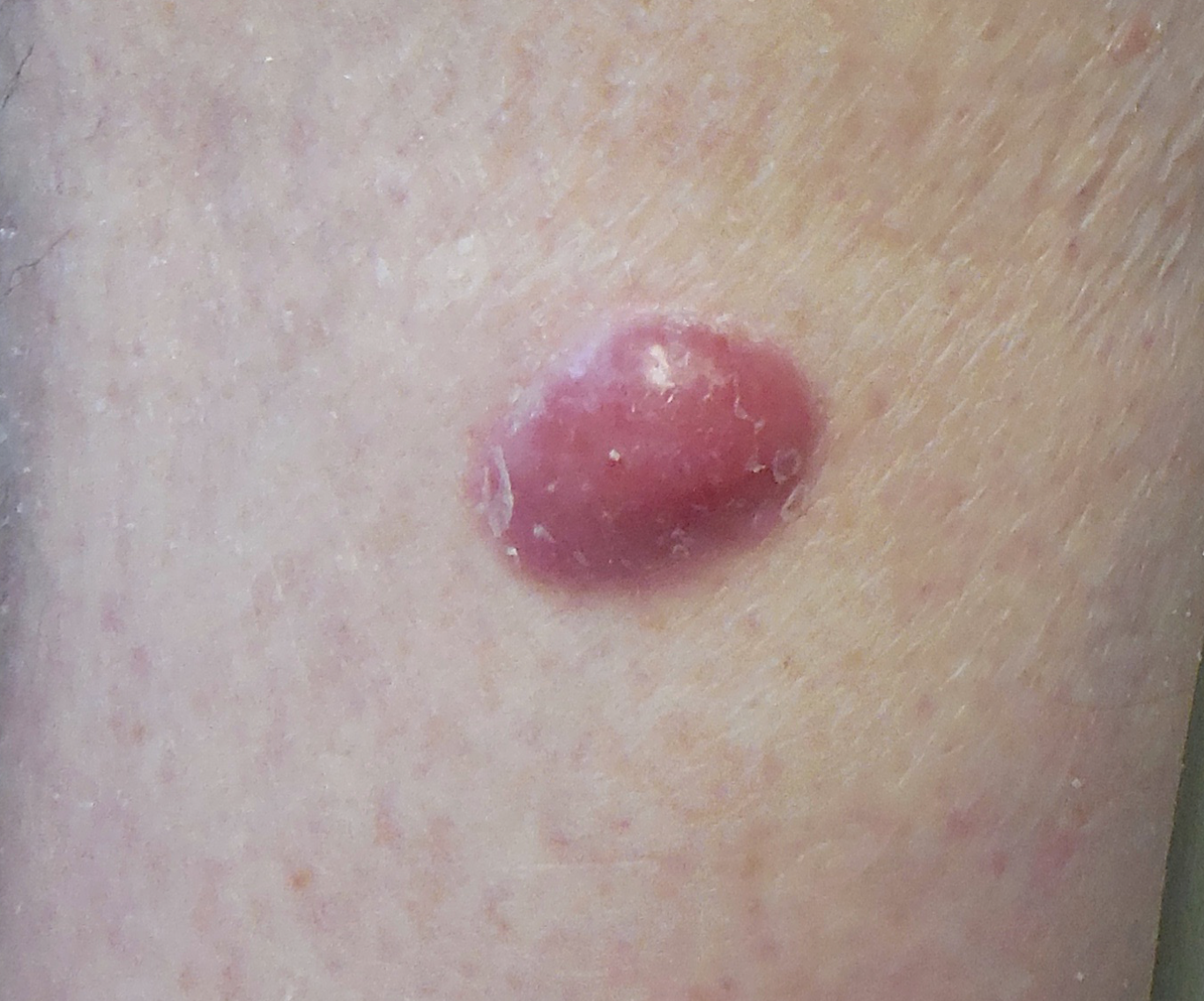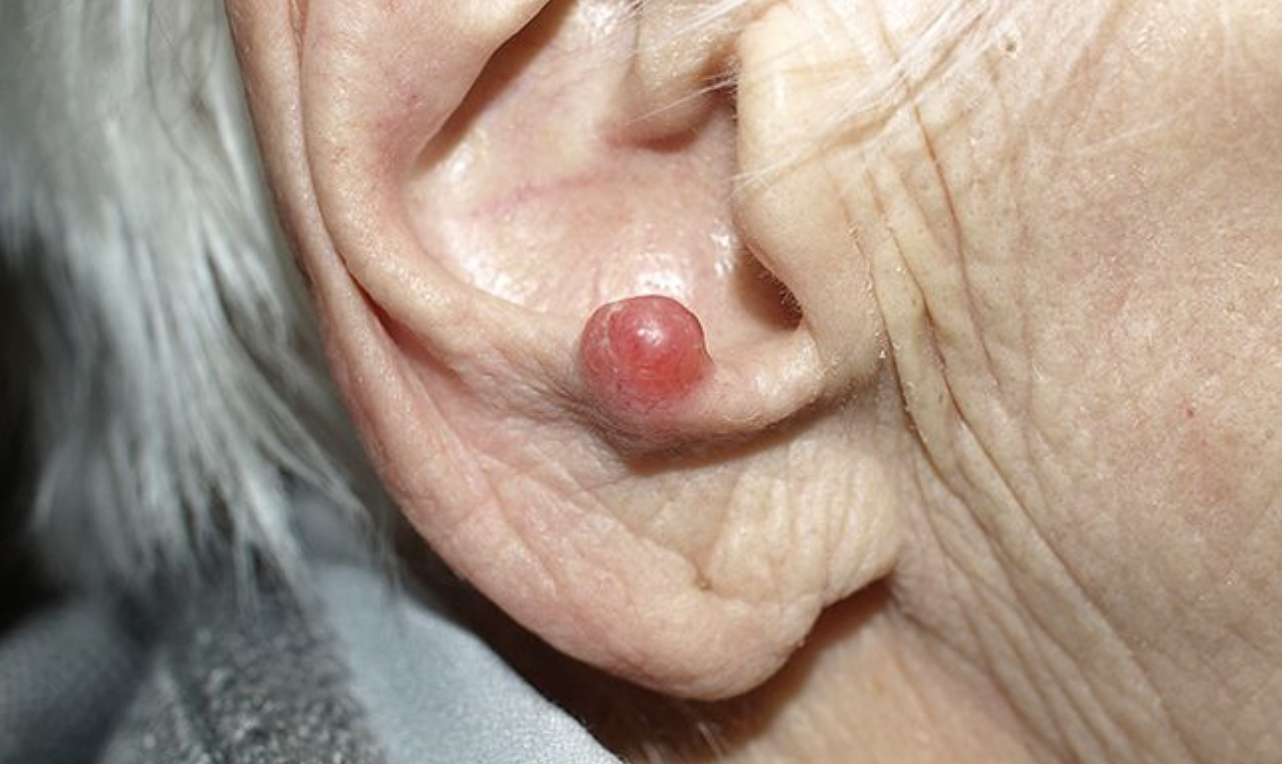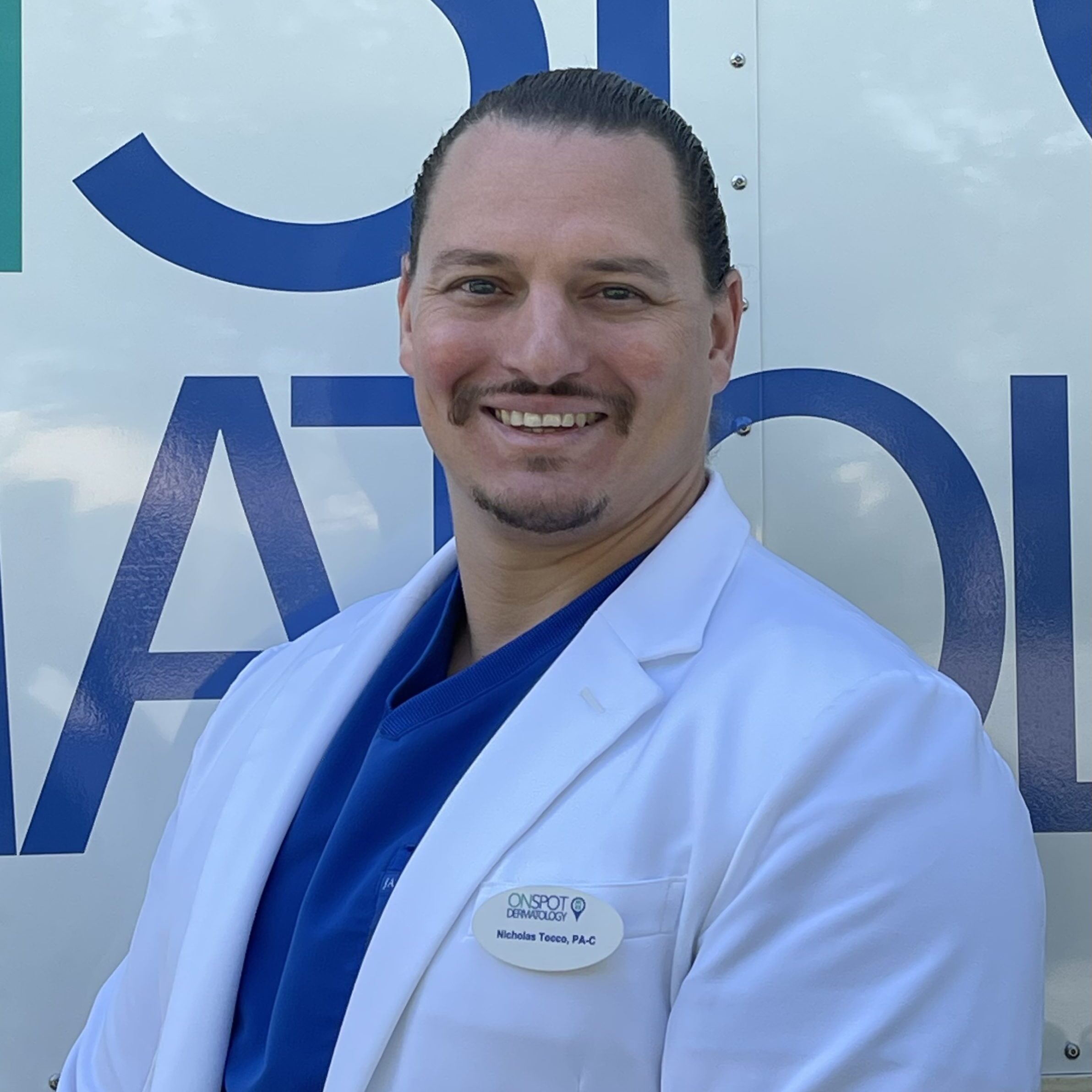Merkel Cell Carcinoma
What Is Merkel Cell Carcinoma?
November 1st, 2023 - In September of this year, the world was saddened to learn of the death of beloved musician and singer-songwriter Jimmy Buffett, who had been battling Merkel cell carcinoma (MCC) for four years. He was only 76 years of age at his passing. For many people, Buffett’s death may have been the first time they ever heard of MCC. As Bob Marley once did for melanoma of the toe, Buffett has raised public awareness of MCC, making it a notorious skin cancer; patients now frequently present for skin checks, asking about various spots on their skin, which they are concerned may be the same cancer which took Jimmy Buffett’s life. The concern is understandable. If a famous artist, with all of his resources and access to excellent healthcare, can lose his life to this skin cancer, what can we all do to help keep ourselves and our loved ones safe? That is the purpose of this brief OnSpot blog – to increase awareness and understanding of MCC, to aid in early detection and treatment, and to increase the health and well-being of our patients and community.


Two examples of how Merkel Cell Carcinoma may present itself.
Merkel Cell Carcinoma Basics
Merkel cell carcinoma, also known as primary neuroendocrine carcinoma of the skin (PNECS), is a rare and highly aggressive type of skin cancer. About 2,000 cases of MCC are diagnosed annually in the US, making it roughly 100 times less common than melanoma. Like all cancers, it occurs when cells in the body grow uncontrollably. This abnormal growth initially forms a tumor in one location; when these cells begin to spread elsewhere in the body, it is called metastasis. Some skin cancers rarely metastasize, such as basal cell carcinoma, which spreads less than 1% of the time. MCC, however, spreads to distant organs in roughly 40% of patients, and 30% of patients die within 5 years from diagnosis.
MCC most often favors the head and neck regions, followed by the arms, legs and buttocks, but can appear anywhere on the skin. It usually appears as a pink-red or violet-colored, firm, dome-shaped bump on the skin which grows rapidly. Sometimes there can be an open sore (ulceration), but MCC tumors are not generally painful, which sometimes can delay detection and treatment.
Risk factors include older age (80% of patients diagnosed with MCC are over 70 years of age), light-colored skin (90% of cases), male gender (men are two times more likely than women to suffer MCC), ultraviolet light exposure (which can be from sun exposure, tanning bed use, or UV light treatment used for diseases such as psoriasis), and a weakened immune system (as in people with organ transplants, people with HIV, people on immuno-suppressant drugs for other diseases, or people with some types of blood cancers). MCC is also associated with a common virus called Merkel cell polyomavirus (MCV), but the relationship is not well understood. About 80% of people are infected with this virus during their lives, often as children, but there are no symptoms, and it only very rarely leads to MCC. For these reasons, there are no currently recommended screening tests or treatments for MCV.
Treatment and Prevention
If you have a spot on your skin suspicious for MCC, or suspicious for any skin cancer, your dermatologist will likely perform a biopsy. Skin biopsies are a common, quick and safe procedure, and nothing to be anxious about. During a biopsy, the spot is first cleansed, then numbed with local anesthetic. A small specimen is removed and sent to a lab to be studied by a dermatopathologist. If MCC is diagnosed, the primary approach is to remove the cancer surgically. This may be done at your usual dermatology clinic. Sometimes lymph nodes need to be checked as well, to look for metastasis; in that case, you may be referred to a surgical oncologist. Sometimes there may also be a need for adjuvant chemotherapy, immunotherapy or radiation therapy, in which case you may be referred to a medical oncologist as well.
In any case, for MCC, as for all skin cancers, early detection is key. It is recommended to get a routine annual full-body skin exam with a dermatology provider. These exams are non-invasive, take only minutes, and can truly be life-saving. OnSpot has made these exams more convenient than ever, bringing mobile dermatology clinics to people’s neighborhoods and places of work, even seeing walk-ins. Skin cancers can be quite subtle, apparent only to a trained eye. Frequently patients come to the clinic concerned about multiple spots which are in fact harmless, but during their exam, one or more cancers are found which the patient was not aware of. This is because, often times, the spots which look bad are in fact benign, while the cancerous spots don’t look like much, unless one knows what to look for.
And while MCC is quite rare, skin cancer in general is not. Skin cancer is by far the most common of all cancers, with one out of five Americans developing skin cancer by age 70. Basal cell carcinoma, the most common form of skin cancer, is 1,800 times more common than Merkel cell, and squamous cell carcinoma, the second most common form, is 900 times more common. Melanoma is more rare than these, with an overall lifetime risk of 2.6% for white people, 0.1% for black people, and 0.6% for hispanic people, but it is more dangerous. All of these cancers, however, are highly treatable if caught early, and that is what your dermatology provider is trained to do during an annual skin exam.
Aside from getting an annual full-body skin exam, the most important thing you can do on your own to prevent getting a skin cancer is to protect yourself from damaging ultraviolet (UV) rays. Never use a tanning bed, and make sunscreen part of your normal daily morning routine. We are often asked what type of sunscreen is best. The short answer is that tinted mineral sunscreen is best, but anything is better than nothing.
When it comes to sunscreen, there are two main types: chemical and mineral. Chemical sunscreens contain ingredients such as oxybenzone, avobenzone, octisalate, homosalate, octocrylene and octinoxate, which are absorbed into the skin, where they convert UV rays into heat, thus protecting the skin. But they are also absorbed into the blood, and there is some controversy regarding their safety. The heat dispersed can also worsen certain skin conditions. Mineral sunscreens, on the other hand, contain ingredients such as zinc oxide, titanium oxide, and iron oxide, which form a protective barrier on the skin’s surface which physically blocks the sun’s rays. They can be applied on top of other medicines or cosmetics, and they work immediately on application, without having to wait 20-30 minutes as with chemical sunscreens. Years ago, mineral sunscreens were associated with a thick, white color which made them obviously visible, but these days, the ingredients are micronized to be less visible, and can be formulated with more of a subtle beige color (tinted). There are even spray-on mineral sunscreens now available. Look for SPF 30 or higher, and remember to re-apply every few hours. An even better physical protection than mineral sunscreen is clothing, brimmed hats and sunglasses. And even better than protective clothing is shade. If possible, try to avoid being in the sun when its UV rays strike us most directly and strongly, between 10 am and 4 pm.
Finally, there are steps you can take not only to reduce your risk of skin and other cancers, but to increase your overall health and well-being. The body’s first line of defense against enemies both foreign (such as infection) and innate (such as cancer) is the immune system. Many cancers have ways of fooling the immune system to protect themselves, but you can reduce your overall risk and boost your immune system by living a healthy lifestyle. Get proper sleep and practice good sleep hygiene, don’t smoke, don’t drink too much alcohol, eat a healthy, balanced diet and take a daily multivitamin, exercise for at least 30 minutes 3-5 times per week, and try to avoid excessive stress and anxiety.
Jimmy Buffett’s music evokes an island, coastal vibe which many of us hold dear. Writing from Florida’s Gulf Coast, I know most of our permanent and seasonal residents cherish the Sunshine State for that very reason, having many fond memories involving beaches, piers, boats, pool decks and backyard barbecues, walking, cycling, and generally enjoying our state’s bright, warm outdoors. Following these simple steps can help us to do so while keeping ourselves and our loved ones healthy and safe.

Nicholas Tocco, PA-C
About the Author
Nicholas Tocco, PA-C is a graduate of Florida Gulf Coast University, where he completed his Master of Physician Assistant Studies degree. Trained in general, surgical and cosmetic dermatology, he is now proud to join the OnSpot Fort Myers team. He is a member of the American Academy of Physician Assistants, the Florida Academy of Physician Assistants, and the Society of Dermatology Physician Assistants. He currently resides in Naples with his wife and four children.
MEDICAL ADVICE DISCLAIMER
The information provided on this site is for educational and informational purposes only. It is not intended to be a substitute for professional medical advice, diagnosis, or treatment. Always seek the advice of your physician or other qualified health provider with any questions you may have regarding a medical condition. OnSpot Dermatology is not providing personalized medical assessments or recommendations for individual cases in this post. The content presented here is based on general knowledge and should not be considered a substitute for a consultation with a qualified healthcare professional. The use of information provided is solely at your own risk. OnSpot Dermatology and the author make no representations or warranties, express or implied, regarding the completeness, accuracy, or usefulness of the information presented. By reading this post, you agree to the above disclaimer and understand that any action you take based on the information provided is at your own discretion. If you have specific questions or concerns about your skin or any medical condition, please consult a healthcare professional for a personalized assessment and recommendations.
